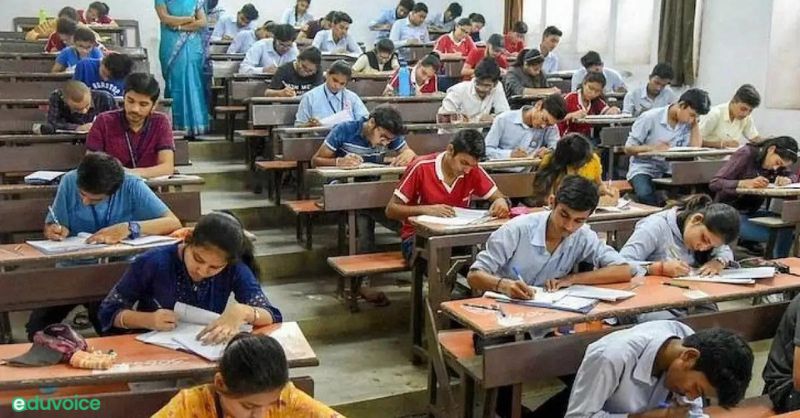With the conviction that ‘pedagogy must evolve to make education more experiential, holistic, integrated, inquiry-driven, discovery-oriented, learner-centered, discussion-based, flexible, and, of course, enjoyable’ a number of academic reforms are being set in motion in higher education.
Now four-year undergraduate degree holders are permitted to pursue Ph.D. programme without going through the rigors of the postgraduate programmes. Following provisions for flexibility, modularity, multiple exits, and lateral entry, students shall have the freedom to study at will without being bound to the time and space restriction imposed by their universities and colleges.
Higher educational institutions have already been forced to allow their students to earn about 40 percent of their credit requirements online.
Students do not need to take all their courses from a single institution. They could open an account called the Academic Bank of Credit (ABC) with the designated depository like investors do for investments and trading in the stock market. They can go on accumulating credit by registering for courses in other institutions of their choice and also through the indigenous and global MOOCs and the rapidly growing educational technology (EdTech) companies, many being startups as higher education aggregators. Students can go on depositing them over time and approach a university to recognise them and award them the degree that they think they have earned.
Students would, however, not be able to buy, sell and exchange their credits and qualifications as financial investors do. Also, they would continue to be dependent on a university for recognition and certification of their qualifications. But these are only early times. As time passes, they might also get to exit the higher education investment and also get rid of the dependence on universities for degrees.
In the future, universities could be replaced by an authority mandated to evaluate, accredit, recognise, certify and validate qualifications. Who knows, the proposed digital university itself could get transformed into this kind of authority sooner than expected.
It has taken more than a decade for the country to come up with a draft higher educational qualification framework. The definition and methodology for the computation of credit prescribed in the draft is however a far cry from being either contemporary or futuristic when seen in the global context.
Best ranked and highly graded universities in India are now allowed somewhat more liberty to tie up with quality higher educational institutions from abroad to award joint degrees through twining, joint, and dual degree programmes. The latest regulation in this regard has relaxed the requirements from what was prescribed earlier. Now such tie-ups can be entered with the top 1000 institutions of the world, instead of the top 500 as prescribed earlier.
The latest in the series of these so-called ‘epoch-making’ reforms, is the announcement that the students would be permitted to pursue two academic programs simultaneously in a regular full-time mode. This is based on the belief that this move would make the learning more student-centric. A large number of academics and educational experts, though, think otherwise.
This particular reform, like many others, is credited to the National Education Policy (NEP 2020), though the first committee that had gone into the issue was constituted as early as 2012. This committee was headed by the first author of this piece. In its 2013 report, this committee had recommended that the full-time regular students could be allowed to do another degree simultaneously but through open, distance, or correspondence mode. Further, they could be permitted to do certificates, diplomas, and advanced diplomas even in regular mode. The committee had, however, given detailed reasons as to why it would not be desirable to permit students to pursue two degrees concurrently as full-time regular students.
Though the recommendation of the committee was approved by the UGC, it was not announced as a regulation. Later, in 2019, another committee headed by the then vice-chairman of UGC went into the whole issue afresh. It too did not consider it advisable to allow students to do two degrees concurrently in the full-time regular mode.
Since UGC has now taken the plunge to permit people to pursue two degrees as full-time regular students, it is important that it thinks through all the complications that the move would entail. Further, one can’t wonder but ask if the juice is worth the squeeze? How does this move compare with policies and practices in other countries?
As regards global practices, universities in the USA permit their students to do a double major. Some variations apart, a double major essentially allows students to do two academic programmes from the same institutions in significantly lesser duration than the duration of the two degrees put together. It would however require them to spend a few semesters more than what is required for a single degree. Students are, though, required to spend extra hours, take more exams, and submit additional assignments.
So is the case in Australia, though universities there make a distinction between a ‘double degree’ and a ‘combined degree’. A double degree would mean doing the two degrees one after another and students could not start the second degree unless they complete the requirements of the first degree. In contrast, the combined degrees could be undertaken in parallel to one another. It is generally argued that the first degree is aimed at a career while the second one enables students to pursue their passions and hobby.
A quick survey of the practices in this regard across the world shows that a variety of nomenclatures are used for such arrangements. At times they are used interchangeably but often to mean slightly differently. Called a double degree, double major, combined degree, conjoint degree etc. they seem to have become popular in many parts of the world like Canada, Denmark, France, Italy, Netherlands, United Kingdom, Singapore, Indonesia, and many more.
At times, universities themselves design such programmes and offer them as a package but, in a few cases, students are given freedom to design their own package. The latter is, however, less common than the former. The double, combined, or conjoint degrees are often marketed aggressively by the universities with the promise of developing ‘highly transferable skill sets’ aimed at bettering the prospects of employability and career progression.
Available evidence indicates that double degrees do not necessarily impress employers. Nor do they cut much ice with universities for admission to higher studies. In contrast, the soft-skill-oriented add-on value-added courses in the single degree improve employability better.
But for these kinds of arrangements, permitting students to concurrently pursue two degrees on a full-time basis could be fraught with confusion and logistical nightmare for the universities. Besides, the possibility of better-ranked students registering for more than one qualification might deprive the students next in the merit of their chances to get admission to academic programmes of their preference. Implications of the policy on access and equity are thus not very hard to imagine.
For More Such Articles, News Update, Events, and Many More Click Here






